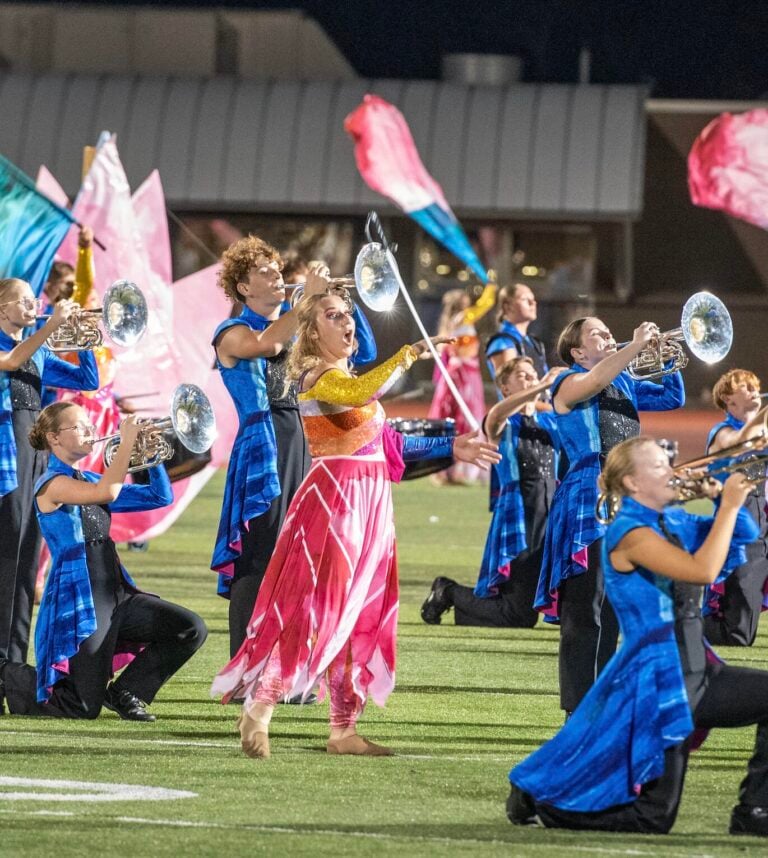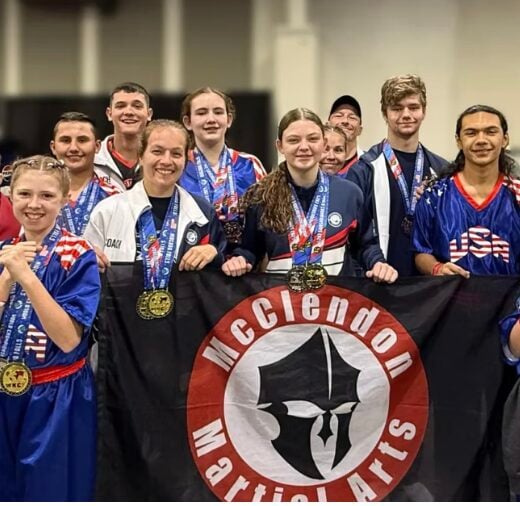March is a transitional month for crappie in Kentucky’s major reservoirs.
When there are several days in a row of sun and warm weather in late winter and early spring, crappie begin moving from deep water in river channels, staging for their spawning forays into shallow water, using creek channels as highways.

The pre-spawn is a period of almost continual transition, driven by current weather conditions.
The two species of crappie in Kentucky waters have seasonal movements and habitat preferences that are somewhat different.
Black Crappie (Promoxis nigromaculatus) are the first to move up into shallow water, followed by White Crappie (promoxis annularis). From tagged crappie, monitored by radio telementry, fishery biologists have learned that Black Crappie not only move up earlier but into much shallower water than White Crappie. While the best spring fishing for both species starts when water temperatures climb into the 50s, Black Crappie can be in shallow water near the banks in March, if it’s unseasonably warm.
Best Crappie Lakes in Central Kentucky
Here’s an update on crappie populations in major lakes in central Kentucky:
• At Green River Lake there are good numbers of harvestable-size fish (nine-inch plus), and lots of sub-legal fish.
It takes a crappie between three and four years to reach harvestable size. There is a low density of Black Crappie in the population.
Fish around the dam and up in the headwaters of Robinson Creek and the Green River arm of the lake in late February through March.

• At Herrington Lake crappie are often difficult to locate but many quality-size fish (ten inches plus) are present.
The best fishing for White Crappie is around brush or fallen trees in the upper half of lake. There is potential to catch large Black Crappie around floating debris in inlets on the main lake.
A creel survey in 2018 found that the average length of crappie harvested by anglers was 11.7 inches for White Crappie and 11.8 inches for Black Crappie.
• At Lake Cumberland a seven-year drawdown of the lake to make repairs to Wolf Creek Dam, which ended in 2014, allowed natural re-vegetation of exposed shorelines, which benefitted crappie and other warm water fish.
There are moderate numbers of crappie, with larger fish, twelve to fourteen inches, relatively common. Strong year classes in 2018 and 2019 should bolster the fishery in the coming years.
Both White Crappie and Black Crappie are present in the lake, but percentages can vary, from year to year, throughout the lake. Generally, there is a higher percentage of Black Crappie in the lower lake.
There is good crappie fishing with lots of shoreline wood cover in Fishing Creek, Beaver Creek, and Wolf Creek.
• At Nolin River Lake both White Crappie and Black Crappie are present, with Black Crappie representing less than ten percent of the population.
Crappie populations have been increasing in recent years. There are good numbers of fish over ten inches.
Black Crappie are more abundant in the clear, rocky lower lake. Conoloway Creek is a top embayment for crappie.
• At Rough River Lake both White Crappie and Black Crappie are present, with White Crappie the dominant species.

Creel surveys in 2018 and 2019 found that Black Crappie accounted for about four to seven percent of the fish caught, and trap net samples through the years reflect a similar percentage, sometimes slightly higher.
In recent years lots of big fish have been caught, with good numbers of ten-inch plus fish available, and good numbers moving into the nine-inch harvestable size.
Crappie may be as shallow as two to five feet deep during the spawn. Brush piles in ten to fifteen feet of water hold larger fish pre-spawn and post-spawn, especially mid-lake.
Some top embayments for crappie are Tules Creek, Long Creek, and Georges Branch.
• At Taylorsville Lake there are good numbers of fish ten inches and larger.
Both White Crappie and Black Crappie are present. Recent sampling has shown that the population is 85 percent White Crappie and fifteen percent Black Crappie, but that ratio can fluctuate.
A very good spawn in 2019 means the future looks promising for crappie fishing in the upcoming years.
Anglers take note of special regulations. For crappie there’s a 10-inch minimum size limit, with a daily creel limit 15 for White Crappie and Black Crappie combined.
Crappie were the most sought-after group fished for in 2016, according to creel survey data.
Flooded timber is key for winter, early spring crappie.
Fish the timbered sections of Beech Creek, Little Beech Creek, Ashes Creek and Timber Creek.
Tackle and Techniques for Crappie in Transition
When crappie start coming to the banks, they congregate around fish attractors, flooded brush, stumps, floating logs and floating wood debris, in progressively shallower water as water temperatures increase.

• White Crappie in shallow water are not boat shy so it’s okay to ease the boat close to the cover being fished.
Dropping live minnows into gaps in the flooded brush or standing timber is a proven producer in late winter, early spring when White Crappie are moving up from deeper water.
Targeting Black Crappie demands a much different approach. Black Crappie tend to be spooky. You can’t pull the boat right on top of them, you have to back off and cast. The lure of choice is a small jig, rigged with a curly tail grub.
Black Crappie often can be found on isolated cover, such as a single stump, a small brush pile, or a weed bed, on the edge of a flat.
• At lakes with lots of wood cover vertical jigging is effective when White Crappie begin to move up on the flats pre-spawn or move away from the bank post spawn. This fishing method is most effective in stained water conditions.
This style of fishing allows the angler to probe structure more efficiently and is especially productive on submerged standing timber, fish attractors, submerged brush piles and the tops of old creek channels, in ten to fifteen feet of water, where stumps may still be present
Fish with a six-foot spinning rod, with the reel spooled in an eight-pound test monofilament line. Jigs should have blades to add “thump,” and should range in weight from 1/8-ounce to 3/16-ounce.
Move the rod tip up and down continually, as the cover is probed and the bait is kept just off the bottom.
The Blakemore Road Runner and Leland’s Lures Fin Spin Jig Head tipped with a plastic bait, are top lures for this type of crappie fishing.
• Spider rigging is a technique that dates back at least thirty years ago in South Carolina.
It allows anglers to target crappie holding over brush piles, channel edges, humps or other bottom structures.
Rods are positioned on the bow of the boat in rod holders, arrayed in a 120-degree arc.
The angler, seated at the bow of the boat, runs the electric trolling motor, glancing down at the fish-finder to locate suspended crappie, bottom contour and structure. Small tube jigs are a top producer.
• While spider rigging is a more targeted presentation, long-line trolling helps anglers find suspended fish.
It is especially effective in the early spring when White Crappie are staging in the mouths of tributaries, and crappie are in 12 to 15 feet of water, suspended over 20 to 25 feet of water.
Specialized tackle enables a lot of water to be covered at various depths. When trolling speed, lure size and colors are dialed-in, big catches can be made.
Long trolling rods, ten to sixteen feet long are placed at the front of the boat (bow) and eight-foot rods on the stern (back) of the boat. Since these trolling rods have soft tips, crappie often hook themselves. It’s a reaction bite.
Small crankbaits, and plastic baits, fished on 1/32-ounce to 1/8-ounce bladed lead heads, are top lures. Reels are spooled in a four-pound test line.
It’s easy to vary trolling speed, stagger the depth being fished and change lure colors. The more rods being fished, the easier it is to find the pattern.
Crappie in transition, late winter to early spring, move up in the water column, sometimes tight to cover, sometimes suspended in creek channels. Fine-tune your tackle and techniques to zero in on this seasonal migration and you’ll catch crappie.





















